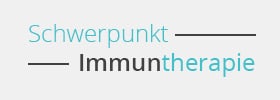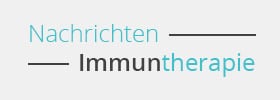New drug combination for acute promyelocytic leukemia
Dr. Matthew Kutny of Children’s of Alabama and the University of Alabama at Birmingham examines Asher, who participated in the Children’s Oncology Group trial that tested all-trans retinoic acid and arsenic trioxide for acute promyelocytic leukemia.
Credit: Patrick Deavours, Children’s of Alabama
A clinical trial has found that the combination of all-trans retinoic acid, which is a metabolite of vitamin A, and arsenic trioxide is highly effective in children with standard- and high-risk acute promyelocytic leukemia, or APL. Nearly all patients in the trial survived for two years without experiencing a relapse. None of the children with standard-risk APL required conventional chemotherapy, and those with high-risk APL received just four doses of the chemotherapy drug idarubicin (Idamycin PFS). The results of the trial, conducted by the Children’s Oncology Group and funded by the National Cancer Institute, part of the National Institutes of Health, were published November 11, 2021, in JAMA Oncology.
“This is a remarkable achievement and will be the new standard of care,” said Malcolm A. Smith, M.D., Ph.D., of the Cancer Therapy Evaluation Program at the National Cancer Institute, which funded the multi-institutional, nonrandomized phase 3 cooperative group trial. “Twenty years ago, these patients would have been treated with intensive chemotherapy, including drugs that lead to heart problems later in life. By comparison, all-trans retinoic acid and arsenic trioxide have fewer acute or long-term side effects.”
“As a pediatrician and an oncologist, I’ve had to have really difficult talks with families about what their child is facing and what type of therapy they’re going to have to go through to be cured,” said Matthew Kutny, M.D., of Children’s of Alabama and the University of Alabama at Birmingham, the study’s lead investigator. “So being able to offer a therapy that is less intense and has fewer side effects, but at the same time has amazingly high survival rates, is a really good feeling.”
APL accounts for 5% to 10% of acute myeloid leukemia diagnoses in children and adolescents. Symptoms of this blood and bone marrow cancer include excessive bleeding, easy bruising, low red blood cell count, fever, and fatigue. Previously, treatment for children with APL involved anthracyclines, which can damage the heart.
An earlier Children’s Oncology Group trial showed that children with APL who were treated with arsenic trioxide and all-trans retinoic acid, along with chemotherapy drugs that included anthracyclines, had high rates of two-year event-free survival and low risk of relapse. Event-free survival is the length of time after primary treatment that the patient remains free of worsening disease, relapse, or death.
The combination of all-trans retinoic acid and arsenic trioxide is currently the preferred initial treatment for adults with standard-risk APL. Adult patients with high-risk APL also receive some chemotherapy, as well as maintenance therapy (further treatment to prevent the leukemia from coming back).
In the Children’s Oncology Group trial (AAML1331; NCT02339740), 154 children between the ages of 1 and 22 who were newly diagnosed with standard- or high-risk APL were given oral all-trans retinoic acid, along with intravenous arsenic trioxide, daily for at least 28 days. Children with high-risk APL also received four doses of the anthracycline idarubicin during the initial phase of treatment. High-risk patients are defined as those with a white blood cell count of more than 10,000/μL. Higher white blood cell counts have historically predicted poorer outcomes in children with APL.
However, in this trial, children with standard- and high-risk APL had two-year overall survival rates of 99% and 100%, respectively. The two-year event-free survival rates were 98% and 96%, respectively. One child with standard-risk APL died early in treatment, and three children (one with standard-risk APL and two with high-risk APL) experienced a relapse.
Fewer than 10% of the children experienced severe side effects, which occurred only in the initial phase of treatment. Side effects included increased blood sugar, liver irritation, and bleeding. Some of the patients with high-risk APL developed mouth sores from the idarubicin treatment. A severe complication of APL is differentiation syndrome, which can cause life-threatening inflammation. Physicians were offered supportive care strategies to help participants manage this and other side effects.
Dr. Kutny pointed out that because there was no need for maintenance therapy, the length of time the children were undergoing treatment was reduced from more than two years to approximately nine months. More follow-up will be needed, he said, to determine the long-term effects of treating children with all-trans retinoic acid and arsenic trioxide.
“Arsenic is often associated with being a poison, but it can also be a powerful medicine,” Dr. Kutny noted. “Arsenic trioxide has been used in traditional Chinese medicine for millennia. The difference between a medication and a poison is really the dose. Over time, we have figured out the exact dosing that would be effective in killing these types of leukemia cells without damaging other healthy tissues.”
Arsenic trioxide works cooperatively with all-trans retinoic acid to block the action of proteins needed by leukemia cells to survive and grow. Dr. Kutny noted that the Children’s Oncology Group is currently investigating ways to deliver arsenic trioxide in an oral form, which would make it easier for children to take.
St. Baldrick’s Foundation of Monrovia, California, a large funder of childhood cancer research grants, also provided support to the Children’s Oncology Group member sites for the conduct of the AAML1331 study.
About the Children’s Oncology Group (COG): COG (childrensoncologygroup.org), a member of the NCI National Clinical Trials Network (NCTN), is the world’s largest organization devoted exclusively to childhood and adolescent cancer research. COG unites over 10,000 experts in childhood cancer at more than 200 leading children’s hospitals, universities, and cancer centers across North America, Australia, and New Zealand in the fight against childhood cancer. Today, more than 90% of the 16,000 children and adolescents diagnosed with cancer each year in the United States are cared for at COG member institutions. Research performed by COG institutions over the past 50 years has transformed childhood cancer from a virtually incurable disease to one with a combined 5-year survival rate of 80%. COG’s mission is to improve the cure rate and outcomes for all children with cancer.
About the National Cancer Institute (NCI): NCI leads the National Cancer Program and NIH’s efforts to dramatically reduce the prevalence of cancer and improve the lives of cancer patients and their families, through research into prevention and cancer biology, the development of new interventions, and the training and mentoring of new researchers. For more information about cancer, please visit the NCI website at cancer.gov or call NCI’s contact center, the Cancer Information Service, at 1-800-4-CANCER (1-800-422-6237).
About the National Institutes of Health (NIH): NIH, the nation’s medical research agency, includes 27 Institutes and Centers and is a component of the U.S. Department of Health and Human Services. NIH is the primary federal agency conducting and supporting basic, clinical, and translational medical research, and is investigating the causes, treatments, and cures for both common and rare diseases. For more information about NIH and its programs, visit nih.gov.



